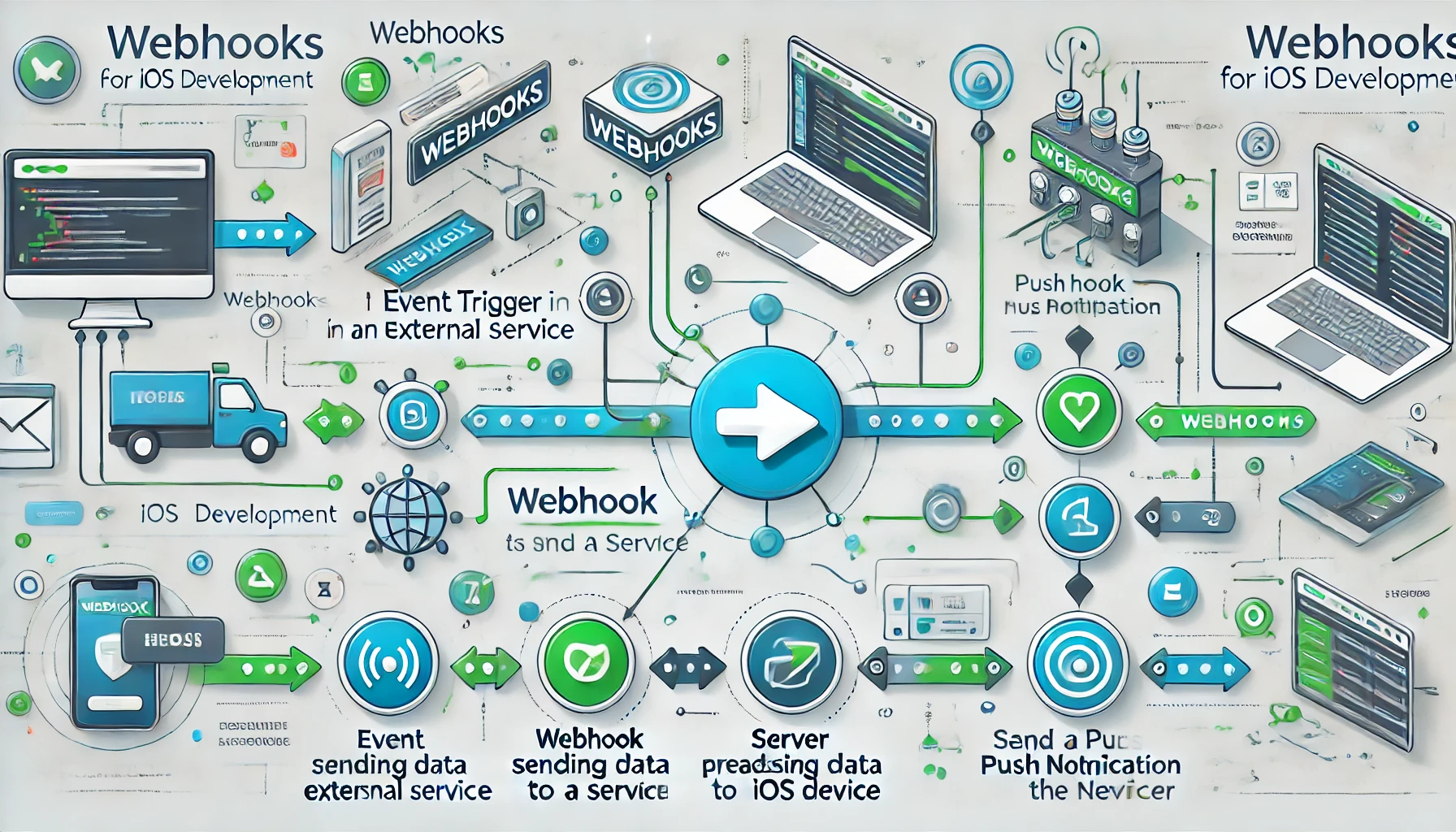
A Guide to Real-Time Event Handling
Webhooks have become essential for real-time data sharing in modern software applications. In iOS development, they offer a unique approach to handle events as they happen, without relying on traditional polling methods. Here’s an overview of webhooks, how they can work within iOS, and how they stack up against other real-time communication tools available to iOS developers.
A webhook is essentially an HTTP callback that sends data from one application to another based on specific events. Imagine you want to know when a payment has been processed on a platform. Instead of constantly checking the payment status, a webhook notifies you immediately when the payment completes, carrying data about the event. Webhooks can be a game-changer for applications needing up-to-the-second updates and can eliminate the need for constant, resource-heavy polling.
Can Webhooks Be Used Natively in iOS?
Unlike server environments, iOS doesn’t support webhooks natively. iOS apps can’t listen continuously for external events due to limitations on background processing. However, developers can still leverage webhooks effectively by using server-side integrations and pairing them with push notifications or background fetch.
Here’s how it typically works:
- Webhook Endpoint on the Server: When an event occurs, the webhook sends data to a server endpoint.
- Push Notification or Background Fetch: Once the server receives the webhook, it can trigger a push notification to alert the iOS app or initiate a background fetch, depending on how timely the data needs to be.
Some third-party services like Firebase or Pusher can simplify this process, enabling webhooks on the server to push event-driven updates to iOS clients.
Webhooks vs. Other Methods in iOS
iOS provides several built-in mechanisms for real-time communication, each with distinct strengths and limitations:
- Push Notifications: The go-to method for alerting iOS apps of new events, even when the app isn’t open. They are reliable but may face delivery issues due to network conditions or notification limits set by Apple.
- Background Fetch: This allows the app to retrieve updates while in the background, though timing depends on system usage patterns. While useful, it doesn’t offer the immediacy that webhooks provide.
- Webhooks with Backend Support: By combining webhooks with a backend server that triggers push notifications or background fetches, developers can achieve a more responsive, event-driven update model. Webhooks allow only relevant updates to be sent, improving efficiency over continuous polling.
Benefits and Challenges of Webhooks in iOS
Advantages:
- Event-Driven Updates: Apps only receive data when something relevant happens, reducing data usage and conserving battery.
- Scalability: Offloading event handling to webhooks helps scale the app effectively, with only meaningful events making their way to the iOS device.
- Reduced Polling: By eliminating the need for polling, webhooks minimize network and battery drain, essential for mobile environments.
Limitations:
- Additional Infrastructure: Since iOS doesn’t natively support webhooks, an intermediary server is required to manage the incoming data, adding some complexity to setup and maintenance.
- Reliability and Performance: Webhooks depend on the server and network reliability, and response times may vary depending on system constraints and network conditions.
- Background Process Limits: iOS restricts background activity, so real-time responses can be delayed if the app isn’t open, impacting the immediacy of certain updates.
Incorporating webhooks into an iOS app setup can be highly effective, especially when paired with push notifications or background fetches. While they can’t fully replace native iOS real-time communication tools, webhooks provide a highly efficient, event-driven alternative that complements these tools well. This hybrid approach offers iOS developers a scalable, battery-friendly, and near real-time solution for handling critical updates in their applications.
Whether you’re working on a payment app, a social platform, or any system that benefits from instant notifications, webhooks, in conjunction with server-side logic, offer an innovative and efficient approach to real-time communication on iOS.